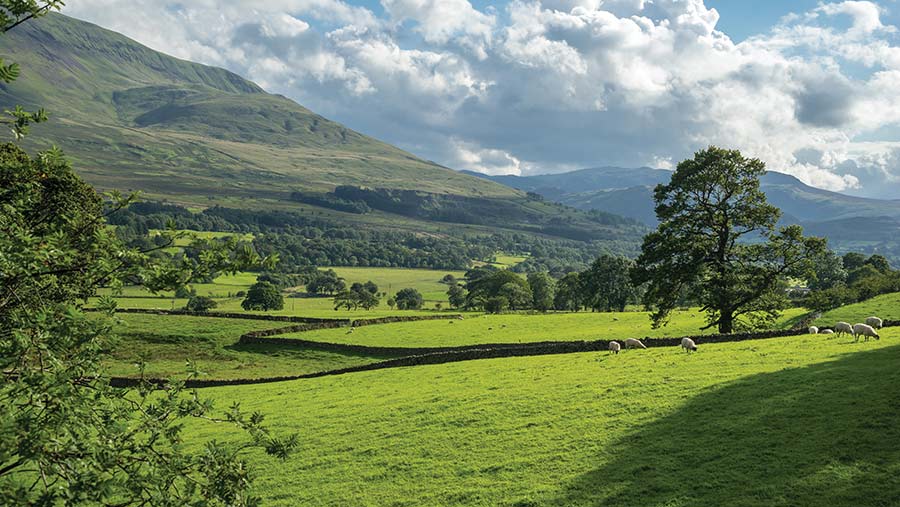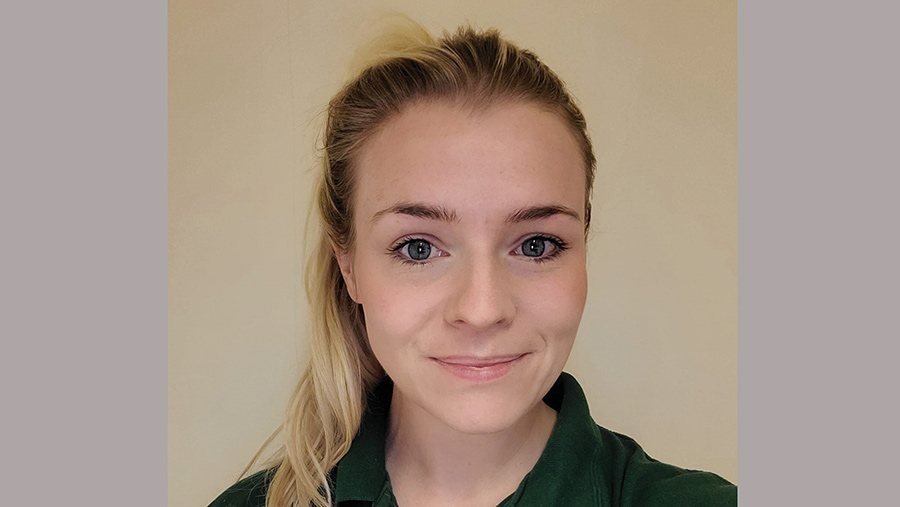Analysis: Time for a closer look as SFI opens for business
 © philipbird123/Adobe Stock
© philipbird123/Adobe Stock With the latest iteration of the Sustainable Farming Incentive (SFI) due to open for applicants on Monday (18 September), a growing number of farmers in England will be asking themselves “is it time to take the plunge?”
The window to register expressions of interest in the SFI actually opened at the end of August, with would-be claimants invited to sign up via the Rural Payments Agency (RPA) portal.
See also: NFU urges Defra to ‘do the right thing’ and halt BPS cuts
Those that have done so will have been asked a number of basic questions – about the land they manage, the “actions” they might be interested in, mapping updates, etc – as a prelude to joining the scheme.
In reality, however, Defra’s “controlled rollout” approach means that, for the next few weeks at least, the numbers of farmers who can apply will be seriously limited.
According to a recent Defra Funding for Farmers webinar, the RPA will start by inviting “just a small number of people” to begin the application process from 18 September, “to tell us where it is not working and where we can make it better”.
Once any issues are sorted, the RPA will invite a larger pool of people to join in and check for glitches.
“Then, when we get to a position where we’re confident everything is working, we’ll open it up for everybody to take part,” says a Defra spokesman. “This might be a few weeks, it might be a bit longer.”
Financial hole
One consequence of these delays is that, for many farmers, land will have already been planted, limiting the SFI options immediately available.
The greater concern, however, is that many English farmers will not now receive any SFI payments until well into 2024 – leaving a big financial hole where once they would have received a full BPS payment.
The NFU is so dismayed, it has demanded Defra call a halt to any further cuts in BPS – which are due to fall by £720m in England this year alone – until all SFI delivery problems are resolved.
“The SFI should have been up and running to deliver payments by December, but critical delays in the roll-out mean that most farmers are unable to access it,” says the union.
“With farm input costs through the roof and interest rates soaring, this leaves farmers in a perilous place.”
The Tenant Farmers Association (TFA) is equally angry and its representatives recently met Defra farming minster Mark Spencer to demand swifter access to the SFI, or “other measures” to help farmers weather the cashflow crisis – namely a freeze on further BPS cuts.
“Farm businesses are already being hit by significant inflation and a downturn in market returns,” says TFA chief executive George Dunn. “The lack of progress in the delivery of SFI means business planning has become virtually impossible.”
Flexibility

Laura Cureton © Kelly Farm Consulting
While the stuttering start to SFI is disheartening, south-west based Kelly Farm Consulting is adamant that everyone should still be looking at the options, citing a number of positives about the new support scheme.
Top of the list is the flexibility it offers compared with previous schemes.
“The application window will be open all year around, so there is less pressure to apply within a deadline, and time to ensure the chosen actions are best suited to the individual farm’s system,” says Kelly Farm Consulting agricultural consultant Laura Cureton.
The fact that the new SFI is a three-year rather than a five-year scheme also improves its flexibility compared with Countryside Stewardship (CS).
“There is also the opportunity to amend and/or add to SFI agreements at the end of each year, which is especially useful as new actions are added going forwards,” Mrs Cureton adds.
For example, it is understood that there will be an agroforestry option in 2024 and an on-farm woodlands option in 2025.
With 23 SFI actions to choose from in 2023, there is no mandatory combination required, and there is freedom to decide how to deliver them within a 12-month period, “as long as you do it in a way that can reasonably be expected to achieve the action’s aim”.
“Many of the SFI options can be stacked on existing stewardship schemes, although farms will not be paid for delivering the same thing twice,” says Mrs Cureton .
“For example, you cannot be paid for a herbal ley (SAM3) in SFI on the same land parcel as delivering legume and herb-rich swards (GS4) in Countryside Stewardship.”
Regular payments
Despite the ongoing delays, once up and running, the scheme will improve cashflow compared with historic agri-environment schemes, as payments will be made quarterly.
“It is anticipated that the first payment will be received in the fourth month following the agreement start date,” says Mrs Cureton .
“This will be automatic and there will be no need to ‘claim’ each quarterly payment, though there will be a requirement to submit an annual declaration.”
How does SFI stack up financially?
Every farm business will be different, but model farm calculations by Kelly Farm Consulting suggest that, initially, the SFI may well make good the BPS payments lost so far.

Charlie Davies © Kelly Farm Consulting
But they do not begin to match its original value and will be totally insufficient by the time BPS is removed altogether in 2027.
For example, a 250ha dairy farm with some arable land and plenty of hedgerows is shown to achieve an annual income from 11 different SFI actions, plus a management payment and animal health and welfare review, of £29,941 (see Table 1).
While this is similar to the BPS lost so far, it is well short of the £58,305 the BPS was worth prior to the cuts starting in 2021.
Similarly, a 200ha arable unit, with existing Countryside Stewardship options and 10km of hedges, could achieve an SFI income of £21,515.
This compares with a BPS cut of over £24,000 so far, but does not come close to the £46,660 the BPS was worth in 2020 (see Table 2).
“Our concern is that, as BPS continues to decline to zero in 2027, these SFI revenues will become insufficient,” says Kelly Farm Consulting’s Charlie Davies.
“Furthermore, there will be costs involved with delivering SFI actions, such as soil tests, seed and establishment costs, or paying for Basis or Facts advisers, which will eat into margins.
“So the SFI is not expected to replace the lost BPS on its own, and farmers would be well advised to tap into some of the other areas where BPS money is going, such as the new grants for farm improvements, including slurry infrastructure and calf housing for health and welfare.”
Should I put the whole farm into flowers or bird food?
Some of the highest payment rates under SFI are for encouraging wildlife on arable land – with £614/ha available for sowing a pollen and nectar flower mix and £732/ha for providing winter bird food.
With no restriction on the area of land that can be allocated to these options, some farmers are considering adopting them big time.
But Laura Cureton of Kelly Farm Consulting is convinced that, even with fairly low establishment and maintenance costs, the margins do not usually match those available from growing winter wheat or barley.
Calculations show that a pollen mix might deliver a gross margin of £445/ha after the cost of seed and fertiliser, while a bird food mix, grown for two years, could achieve a gross margin of £613/ha.
But even at an average yield of 9.2t/ha and a price of £180/t, Mrs Cureton estimates that winter wheat should achieve a gross margin (after seed, fertilisers and sprays) of £1,097/ha, while barley at 7.5t/ha and £160/t would deliver £750/t.
“Considerations should be given to other factors, not just the gross margins,” she says.
For example, larger areas of pollen mix may fit well with an integrated pest management approach, or it may work well for someone looking to reduce their workload or contain market volatility.
Overhead costs and yield expectations should also be taken into account.
Table 1: 250ha case study dairy farm |
|||
| Made up of 50ha of temporary grassland, 60ha of improved grassland, 40ha of permanent pasture, 100ha of arable ground and 12km of hedgerows | |||
| SFI action | Payment rate | Area/length | Total £ |
| Soil test and management plan | £5.80/ha + £95/agreement | 250ha | £1,545 |
| Multispecies winter cover crops | £129/ha | 20ha | £2,580 |
| Herbal leys | £382/ha | 20ha | £7,640 |
| Assess/record hedgerow condition | £3/100m (one side) | 12km | £360 |
| Manage hedgerows | £10/100m (one side) | 12km | £1,200 |
| Maintain/establish hedgerow trees | £10/100m (both sides) | 6km | £660 |
| Integrated pest management plan | £989/year | £989 | |
| Flower-rich grass margins | £673/ha | 6ha | £4,038 |
| Nutrient management report | £589/year | £589 | |
| Winter bird food on arable land | £732/ha | 4ha | £2,928 |
| Manage grassland with low inputs | £151/ha | 40ha | £6,040 |
| SFI management payment | £20/ha | 50ha | £1,000 |
| Animal health and welfare review | £372/year | £372 | |
| Annual SFI income | £29,941 | ||
| Expected 2024 BPS | £31,411 | ||
| BPS prior to reductions | £58,305 | ||
Table 2: 200ha case study arable farm |
|||
| All arable, existing Countryside Stewardship scheme, with AB8, AB9 and AB6 options, plus 10km of hedgerows | |||
| SFI action | Payment rate | Area/length | Total £ |
| Soil test and management plan | £5.80/ha + £95/agreement | 200ha | £1,255 |
| Assess/record hedgerow condition | £3/100m (one side) | 10km | £300 |
| Manage hedgerows | £10/100m (one side) | 10km | £1,000 |
| Maintain/establish hedgerow trees | £10/100m (both sides) | 5km | £500 |
| Integrated pest management plan | £989/ year | £989 | |
| Flower-rich grass margins | £673/ha | 3ha | £2,019 |
| No use of insecticide | £45/ha | 120ha | £5,400 |
| Nutrient management report | £589/ year | £589 | |
| Legume fallow | £593/ha | 10ha | £5,930 |
| Grassy field corners | £590/ha | 2ha | £1,180 |
| 4m to 12m grass buffer strip | £451/ha | 3ha | £1,353 |
| SFI management payment | £20/ha | 50ha | £1,000 |
| Existing CS agreement | |||
| Flower-rich margins and plots | £673/ha | 2ha | £1,346 |
| Winter bird food | £732/ha | 2ha | £1,464 |
| Enhanced overwinter stubble | £522/ha | 2ha | £3,132 |
| Annual SFI and CS income | £27,457 | ||
| Expected 2024 BPS | £22,497 | ||
| BPS prior to reductions | £46,660 | ||
